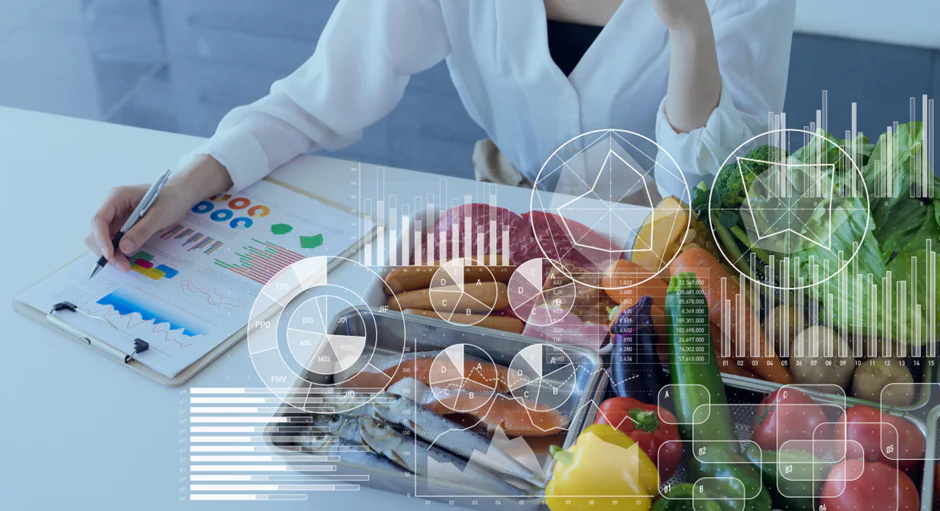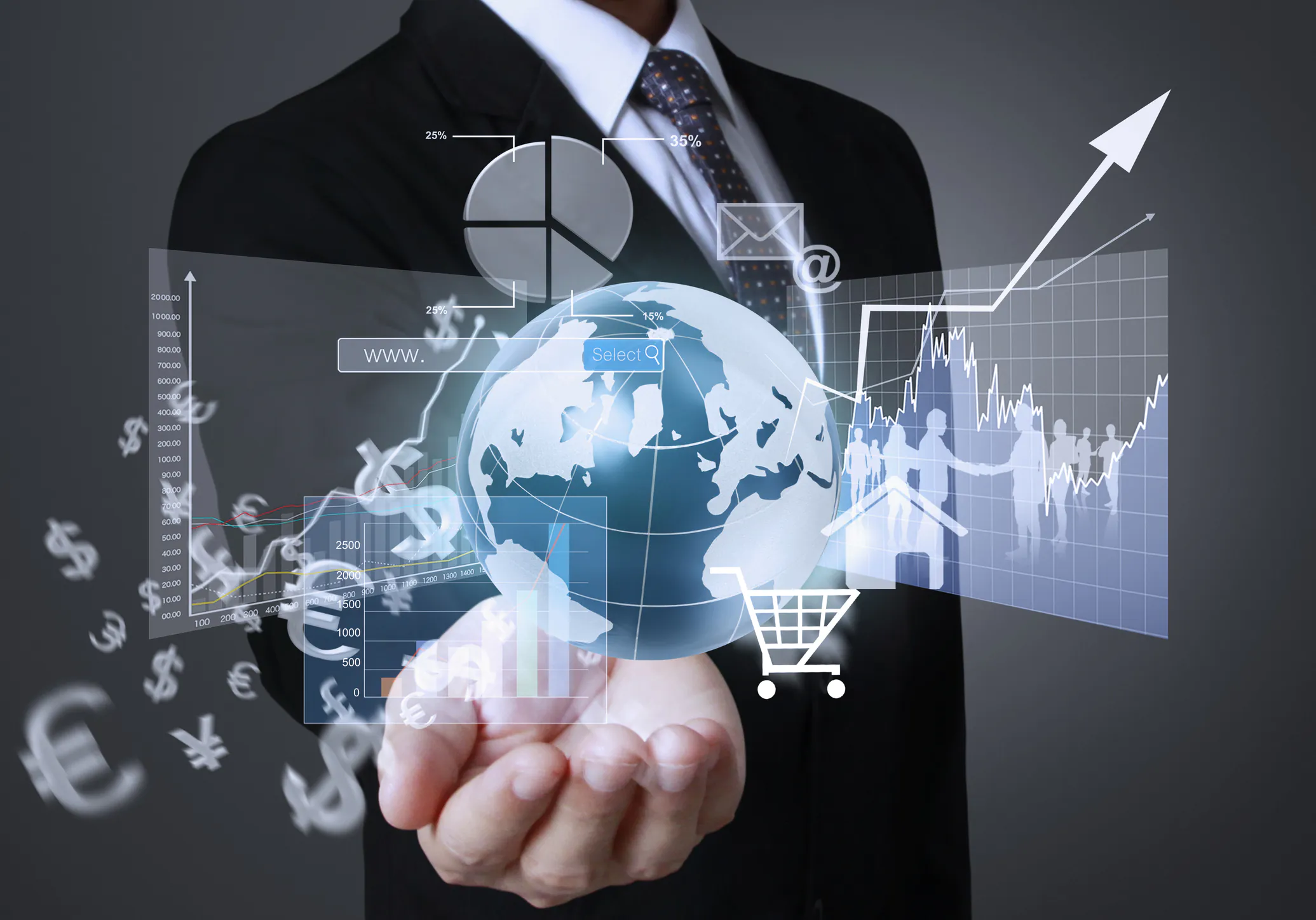Written by: Sudeshna Ghosh
Table of Contents
Introduction to Food and Beverage Analytics
In the diverse and dynamic world of the food and beverage industry, the intersection of culinary arts and data analytics is becoming increasingly essential. At first glance, data and food might seem like an unlikely pairing. Yet, they blend more seamlessly than one might expect. Data analytics is now a pivotal tool for food and beverage companies, offering profound insights into eating habits, dietary health, and consumer preferences. This guide explores five key ways in which food and beverage companies can leverage analytics and data to bring about positive transformations in their products and practices, enhancing customer satisfaction and driving business growth.
Streamlining Profit and Revenue Management in Food and Beverage with Analytics
- Profit Source Analysis: Utilizing food and beverage analytics, companies can decipher where their primary profits are originating. This insight allows for a strategic focus on high-yield products and helps in refining pricing strategies to reflect market trends and consumer demand.
- Competitive Pricing Insights: By comparing their pricing practices with those of industry counterparts, companies can understand market standards and adjust their strategies to stay competitive. Analytics provide a comprehensive view of how a company’s pricing strategy stacks up against its competitors, guiding them to make informed decisions.
- Business Performance Optimization: Analytics tools in food and beverage help companies analyze various aspects of their business, from sales to customer engagement. This aids in identifying performance bottlenecks and opportunities, leading to improved business operations and increased profitability.
- Market Positioning: With the aid of analytics, food and beverage companies can gauge their position in the industry. Understanding where they stand in comparison to competitors can inform strategies to enhance market share and brand recognition.
To gain comprehensive insights into the benefits of analytics in the food and beverage industry, contact us.
Request a proposal to know how you can benefit by collaborating with Quantzig.
Enhancing Marketing with Food and Beverage Analytics
- Data-Driven Product Promotion: Food and beverage companies can leverage analytics to understand consumer purchasing behaviors, enabling them to target marketing efforts more effectively. For instance, if certain products like blueberry muffins are showing increased popularity, companies can create targeted marketing campaigns with deals, coupons, and personalized offers to boost sales.
- Refining Digital Marketing Strategies: Analytics allow for more effective email and digital marketing campaigns. By targeting customers based on their purchase history, companies can promote relevant products, increasing the likelihood of repeat purchases. For example, beverage companies could target coffee lovers with advertisements for new coffee varieties, increasing customer engagement and sales.
- Customer Segmentation and Personalization: Through data analytics, food and beverage companies can segment their customer base, tailoring marketing efforts to suit different groups. This approach ensures that marketing content is relevant and resonates with the intended audience, thereby improving customer response rates.
- Optimizing Marketing ROI: By analyzing which products are popular and who is buying them, companies can allocate their marketing resources more efficiently, ensuring a better return on investment. This targeted approach reduces wasted effort and maximizes the impact of marketing campaigns.
Optimizing Inventory Management in the Food and Beverage Industry through Analytics
- Demand Forecasting and Stock Management: Analytics play a crucial role in helping food and beverage companies predict future demand patterns. Accurate forecasting enables these companies to manage their inventory more effectively, ensuring they are neither overstocked nor understocked.
- Minimizing Waste and Maximizing Efficiency: By leveraging insights from analytics, businesses can prevent the wastage of products and ingredients due to overstocking. Similarly, they can avoid the pitfalls of understocking, which can lead to missed sales opportunities and customer dissatisfaction.
- Strategic Stock Planning: Data analytics aids businesses in understanding which products need to be stocked regularly and which are subject to seasonal or fluctuating demand. This strategic approach to inventory management not only saves time and resources but also optimizes product availability.
- Supply Chain Optimization: Implementing analytics in inventory management contributes to an overall streamlined supply chain. Companies gain better visibility and control over their stock levels, leading to more efficient operations and reduced operational costs.
Adapting to Changing Dietary Needs Through Analytics in Food and Beverage
- Tracking Evolving Dietary Trends: With an increase in diverse diet preferences, such as veganism, vegetarianism, and other specialized diets, analytics provide crucial insights. Food and beverage companies use data analytics to keep pace with these changing consumer preferences and dietary needs.
- Product Development Informed by Consumer Habits: Leveraging food data analytics, companies like Ben and Jerry’s have successfully tapped into niche markets such as dairy-free ice cream. By understanding consumer demand for these products, they’ve expanded their offerings to cater to vegan and lactose intolerant customers, exemplifying how analytics can influence product innovation.
- Personalized Product Offerings: Data analytics enable companies to align their products with specific dietary preferences of their customers. By understanding and responding to these needs, companies can retain existing customers and attract new ones looking for certain dietary options.
- Customer Loyalty and Market Adaptation: Utilizing analytics to listen to and understand customer preferences is key to building loyalty and staying competitive. It helps companies to adapt their product offerings more swiftly, reducing the risk of losing customers to specialized brands or competitors.
Broad Benefits of Applying Analytics in the Food and Beverage Industry
The application of data analytics in the food and beverage sector offers a spectrum of benefits that enhance various aspects of business operations:
- Data-Driven Strategic Planning: Analytics enable businesses to form strategies based on comprehensive data insights. This approach is crucial for future planning, especially in an industry where trends and consumer demands are constantly evolving.
- Reduction in Waste and Environmental Impact: By optimizing supply chain and inventory processes through analytics, companies can significantly reduce waste. This not only aligns with environmental sustainability goals but also helps in cost reduction.
- Enhanced Customer Satisfaction: Personalized marketing strategies and product offerings, informed by analytics, lead to improved customer satisfaction. Happy customers are more likely to remain loyal to the brand, thus driving long-term business growth.
- Operational Cost Savings: Implementing analytics across different business areas, from production to distribution, can lead to substantial reductions in operational costs, thereby enhancing overall profitability.
- Insights into Market Trends and Consumer Behavior: Analytics provide valuable insights into market trends, consumer behavior, and purchasing patterns. These insights enable businesses to make informed decisions and stay ahead in the competitive market.
- Quality Control and Safety Standards: In an industry where quality and safety are paramount, analytics aid in maintaining high standards, ensuring compliance with safety regulations and consumer expectations.

In conclusion, food and beverage analytics is not merely about analyzing data; it’s about harnessing insights to unlock new growth opportunities, improve efficiency, and foster customer engagement. The benefits of analytics extend beyond the companies to their customers, contributing to enhanced brand loyalty and overall satisfaction.




